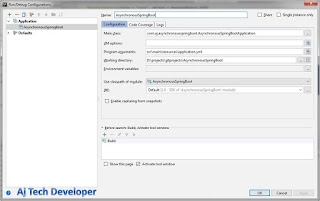How to setup RabbitMQ on Windows
Step 1: First you need to install a supported version of Erlang for Windows. Download and run the Erlang for Windows installer from: Erlang Website. 64-bit versions are highly recommended. I have downloaded and installed: otp_win64_20.1.exe
Step 2: Set ERLANG_HOME
Set ERLANG_HOME in System variables under Environment Variables as per your Erlang installation directory. In my machine, I have used: D:\Programs\erl9.1
Then set it to Path. I have appended: %ERLANG_HOME%\bin
Step 3: Download and install RabbitMQ from: RabbitMQ Webiste. The latest version is 3.7.0. I have downloaded and installed: rabbitmq-server-3.6.14.exe. The steps for the latest version are also the same.
Step 4: I have installed RabbitMQ in the directory: D:\Programs\RabbitMQ Server\rabbitmq_server-3.6.14
Start RabbitMQ Server using the command:
Start RabbitMQ Server using the command:
D:\Programs\RabbitMQ Server\rabbitmq_server-3.6.14\sbin>rabbitmq-server.bat start
In a one time cnofiguration, enable RabbitMQ Management Plugin to see and use RabbitMQ Web Console using the command:
URL: http://localhost:15672/mgmt
Username: guest
Password: guest
Few useful RabbitMQ commands:
1. To check the general status of RabbitMQ:
Related Post
D:\Programs\RabbitMQ Server\rabbitmq_server-3.6.14\sbin>rabbitmq-plugins.bat enable rabbitmq_managementOnce the RabbitMQ Management Plugin is enabled, RabbitMQ console can be accessed using the following:
URL: http://localhost:15672/mgmt
Username: guest
Password: guest
Few useful RabbitMQ commands:
1. To check the general status of RabbitMQ:
D:\Programs\RabbitMQ Server\rabbitmq_server-3.6.14\sbin>rabbitmqctl.bat status2. To check plugins enabled in RabbitMQ:
D:\Programs\RabbitMQ Server\rabbitmq_server-3.6.14\sbin>rabbitmq-plugins.bat list
Related Post
Learn IoT (Internet of Things) in simple steps. Check my post: IoT Tutorial.





Comments
Post a Comment